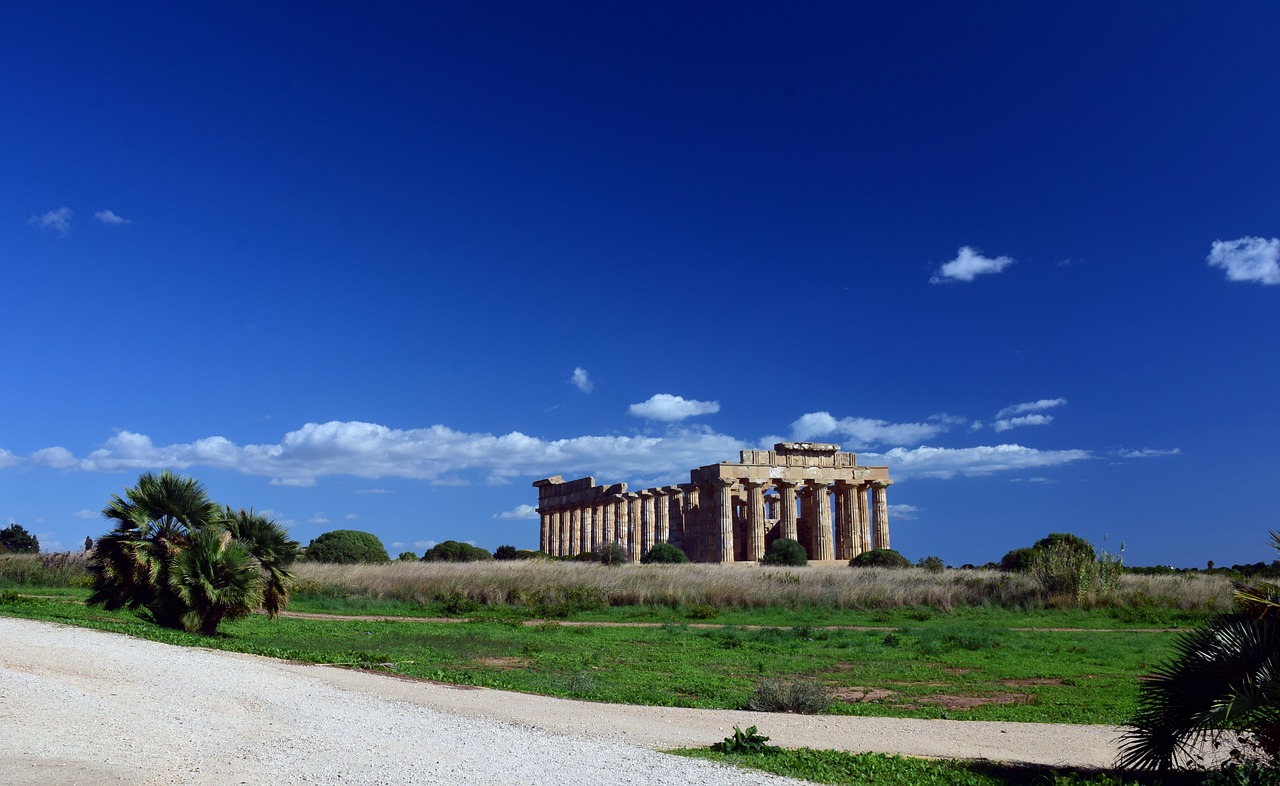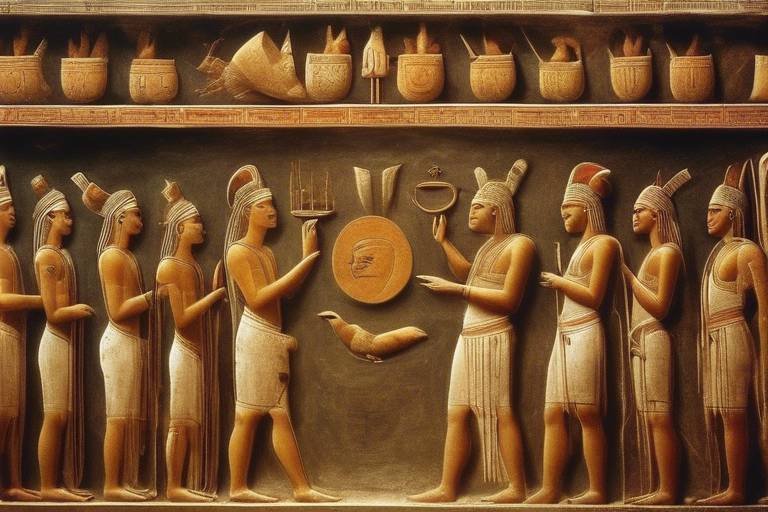How Ancient Cultures Used Symbolism in Art
Art has always been a powerful medium for communication, transcending language and time to convey deep meanings and beliefs. Ancient cultures around the world utilized symbolism in their art to express intricate ideas, religious beliefs, societal values, and cultural narratives. From the mystical symbols of Egyptian hieroglyphics to the allegorical representations in Roman art, symbolism played a crucial role in shaping the artistic expressions of these civilizations.
Exploring the rich tapestry of symbolism in ancient Egyptian art unveils a world where every symbol held profound significance. Hieroglyphics were not just characters but sacred symbols that represented gods, pharaohs, and the afterlife. The use of symbols in Egyptian art was a way to convey complex religious beliefs, societal roles, and the eternal journey of the soul beyond death.
Ancient Greek art, steeped in mythology and storytelling, used symbolism to bring gods, goddesses, and mythical creatures to life on pottery, sculptures, and frescoes. Each symbol in Greek art was a thread in the intricate tapestry of cultural values and narratives, reflecting the ideals and beliefs of a civilization that revered beauty, wisdom, and heroism.
Chinese art, with its deep-rooted symbolism, sought to convey harmony, longevity, and prosperity through intricate motifs and symbols. From the auspicious dragon to the serene lotus flower, each symbol in traditional Chinese art carried layers of meaning derived from centuries of philosophical teachings and cultural beliefs.
The Mayan civilization, known for its advanced writing system and astronomical knowledge, used glyphs and icons in their art to record historical events, religious rituals, and cultural practices. Deciphering the intricate symbolism of Mayan art offers a glimpse into a civilization that thrived on complex mathematical calculations and cosmic interpretations.
Native American tribes embraced totemism as a way to connect with nature, ancestors, and spiritual forces. Totem poles, adorned with symbolic representations of animals, spirits, and clan identities, served as visual narratives of tribal histories, stories, and beliefs, preserving their cultural heritage through art.
The symbolic representations on Indus Valley seals provide a window into the religious practices, trade connections, and social structures of an ancient civilization that flourished along the banks of the Indus River. Each symbol on the seals tells a story of a thriving society that valued craftsmanship, trade, and spiritual beliefs.
Ancient Rome used allegorical art to convey moral virtues, political messages, and historical events through symbolic representations of gods, heroes, and mythical creatures. The intricate symbolism in Roman art served as a visual language that communicated the values and aspirations of a powerful empire that spanned continents.
West Africa's Adinkra symbols are a testament to the rich cultural heritage and values of the region, with each symbol representing a proverb, virtue, or concept. Adorned on textiles, pottery, and architecture, these symbols serve as visual reminders of the wisdom and traditions passed down through generations.
The Aztec calendar, with its complex system of symbols and glyphs, offers a fascinating insight into the cosmic cycles, deities, and rituals of the Aztec civilization. Each symbol on the calendar is a piece of a larger puzzle that unravels the mysteries of an ancient culture's understanding of time, space, and divinity.

Egyptian Symbolism
Ancient Egyptian art is renowned for its intricate use of symbolism, which played a crucial role in conveying various aspects of their culture and beliefs. Symbolism in Egyptian art was not merely decorative but held deep significance related to religious beliefs, societal roles, and the afterlife. The use of symbols such as the Ankh, the Eye of Horus, and the Scarab beetle reflected their beliefs in life, death, and rebirth. These symbols were not just artistic elements but carried profound meanings that connected the physical world with the spiritual realm.

Greek Mythology Depictions
In ancient Greek art, symbolism played a crucial role in depicting various aspects of mythology. The gods and goddesses of Greek mythology were often represented in art through symbols that conveyed their unique attributes and stories. For example, Zeus, the king of the gods, was commonly depicted with a thunderbolt, symbolizing his power and authority over the heavens. Similarly, Athena, the goddess of wisdom and warfare, was often shown with an owl, representing wisdom and foresight.
Ancient Greek art also featured mythical creatures such as the centaur, a half-human, half-horse being, symbolizing the duality of human nature and the struggle between civilization and primal instincts. These depictions not only served as artistic expressions but also carried deeper meanings that resonated with the cultural values and narratives of the time.
Moreover, Greek mythology was rich in symbolism that extended beyond the gods and heroes to encompass themes of love, betrayal, heroism, and tragedy. Artists used symbols like the olive branch for peace, the laurel wreath for victory, and the serpent for healing and transformation to evoke emotions and convey complex narratives in their artworks.
By incorporating symbolism in their art, ancient Greeks were able to capture the essence of their mythology and beliefs, creating visual narratives that continue to fascinate and inspire audiences to this day.

Chinese Symbolism
Symbolism in art has been a powerful tool used by ancient cultures to convey deeper meanings, beliefs, and stories. Let's explore how various civilizations, such as the Egyptians, Greeks, Chinese, Mayans, Native Americans, Romans, Africans, and Aztecs, utilized symbolism in their artistic expressions to communicate cultural values and spiritual beliefs.
Chinese art is renowned for its intricate use of symbols to represent profound concepts deeply rooted in Chinese philosophy and beliefs. Symbols such as the dragon, phoenix, and lotus flower are not merely decorative elements but carry significant meanings. The dragon symbolizes power, strength, and good fortune, while the phoenix represents rebirth and immortality. The lotus flower symbolizes purity and enlightenment, reflecting the harmony between nature and humanity in Chinese culture.
Moreover, colors play a crucial role in Chinese symbolism. Red symbolizes joy, luck, and happiness, often used in celebrations and festivals. Gold represents wealth and prosperity, symbolizing abundance and success. Black, on the other hand, symbolizes mystery and depth, often associated with the unknown and the hidden truths of the universe.
In traditional Chinese art, the use of symbols extends beyond visual aesthetics to convey moral values, auspicious meanings, and wishes for longevity and prosperity. For example, the Chinese character for "double happiness" is a popular symbol used in weddings to wish the newlyweds a harmonious and blissful union. The fish symbolizes abundance and wealth, as the Chinese word for fish sounds like "surplus" or "extra," symbolizing a wish for prosperity and surplus in life.
Furthermore, Chinese art often incorporates symbolic animals like the tortoise, crane, and deer, each carrying unique meanings and symbolizing longevity, wisdom, and prosperity. These symbols are not only decorative elements but serve as visual metaphors that convey deeper philosophical and spiritual concepts in Chinese culture.
Through the intricate use of symbols in art, the Chinese civilization has preserved its rich cultural heritage and philosophical beliefs, creating a visual language that transcends time and space, inviting viewers to explore the profound meanings and symbolism embedded in each artistic creation.

Mayan Glyphs and Icons
The Mayan civilization is renowned for its intricate system of glyphs and symbolic icons, which played a crucial role in their art and communication. These glyphs were not mere decorative elements but rather a sophisticated writing system that conveyed complex messages and historical records. Each glyph represented a syllable or concept, allowing the Mayans to document their history, rituals, and astronomical knowledge.
Mayan icons, on the other hand, were symbolic representations of various gods, animals, and celestial bodies. These icons were often integrated into architectural structures, pottery, and textiles, serving as visual markers of Mayan beliefs and cultural identity. For instance, the jaguar symbolized power and strength, while the serpent represented rebirth and transformation.
One of the most famous Mayan glyphs is the "Haab" calendar, consisting of 18 months with 20 days each, plus a five-day "unlucky" period at the end. This calendar glyph was used for agricultural and ritual purposes, guiding the Mayans in planting crops and conducting religious ceremonies based on celestial events.
Mayan art, adorned with glyphs and icons, not only reflected their reverence for the natural world and spiritual beliefs but also served as a means of preserving their cultural heritage for future generations. The intricate details and symbolic meanings behind Mayan glyphs and icons continue to intrigue scholars and art enthusiasts alike, offering a glimpse into the rich tapestry of Mayan civilization.

Native American Totemism
Native American tribes have a deep connection to nature and animals, which is reflected in their symbolic art forms known as totem poles. These intricately carved wooden poles serve as visual representations of clan identities, stories, and spiritual beliefs. Each figure or symbol on a totem pole carries significant meaning, often representing a specific animal spirit or ancestral lineage. The art of totem pole carving is a sacred tradition passed down through generations, embodying the rich cultural heritage and spiritual practices of Native American tribes.

